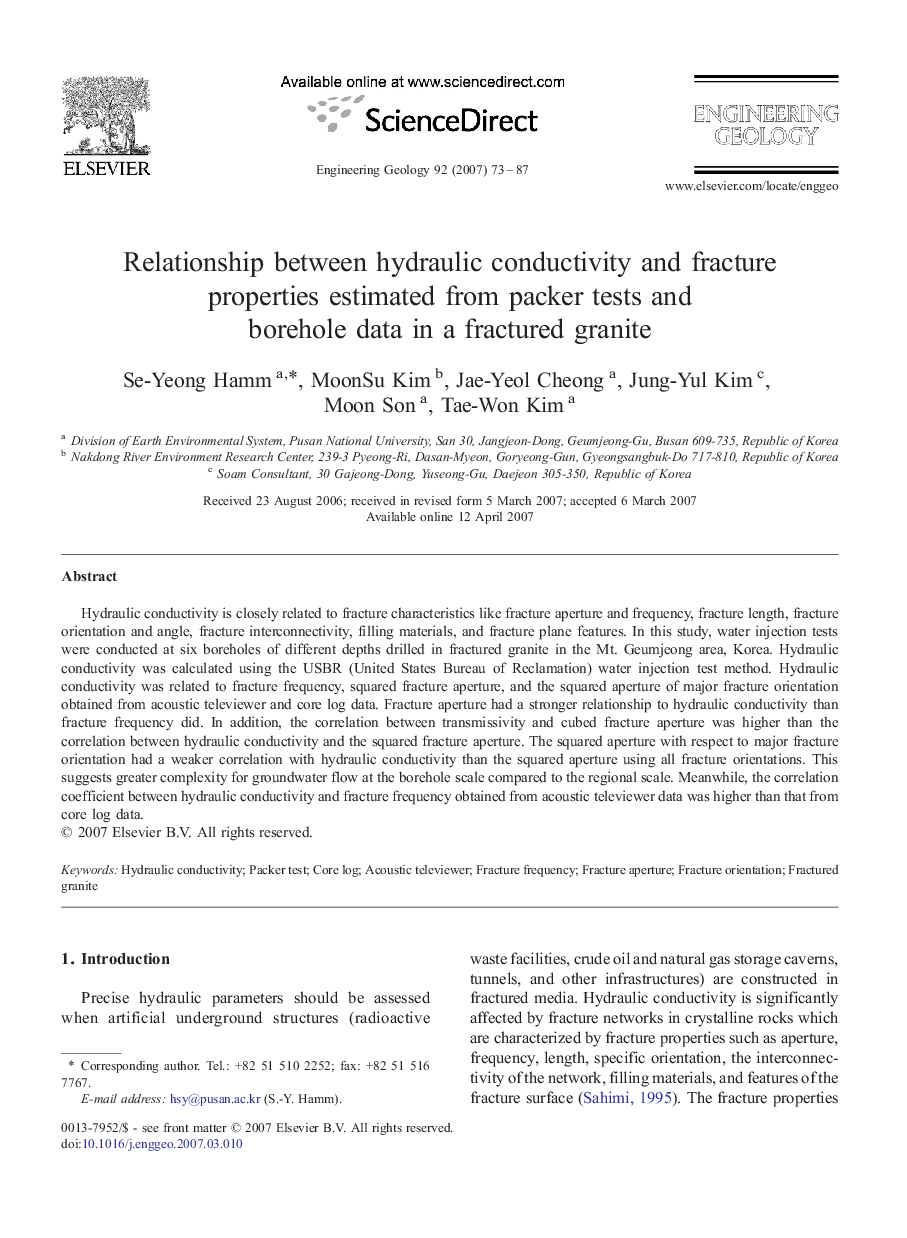| Article ID | Journal | Published Year | Pages | File Type |
|---|---|---|---|---|
| 4744984 | Engineering Geology | 2007 | 15 Pages |
Hydraulic conductivity is closely related to fracture characteristics like fracture aperture and frequency, fracture length, fracture orientation and angle, fracture interconnectivity, filling materials, and fracture plane features. In this study, water injection tests were conducted at six boreholes of different depths drilled in fractured granite in the Mt. Geumjeong area, Korea. Hydraulic conductivity was calculated using the USBR (United States Bureau of Reclamation) water injection test method. Hydraulic conductivity was related to fracture frequency, squared fracture aperture, and the squared aperture of major fracture orientation obtained from acoustic televiewer and core log data. Fracture aperture had a stronger relationship to hydraulic conductivity than fracture frequency did. In addition, the correlation between transmissivity and cubed fracture aperture was higher than the correlation between hydraulic conductivity and the squared fracture aperture. The squared aperture with respect to major fracture orientation had a weaker correlation with hydraulic conductivity than the squared aperture using all fracture orientations. This suggests greater complexity for groundwater flow at the borehole scale compared to the regional scale. Meanwhile, the correlation coefficient between hydraulic conductivity and fracture frequency obtained from acoustic televiewer data was higher than that from core log data.
